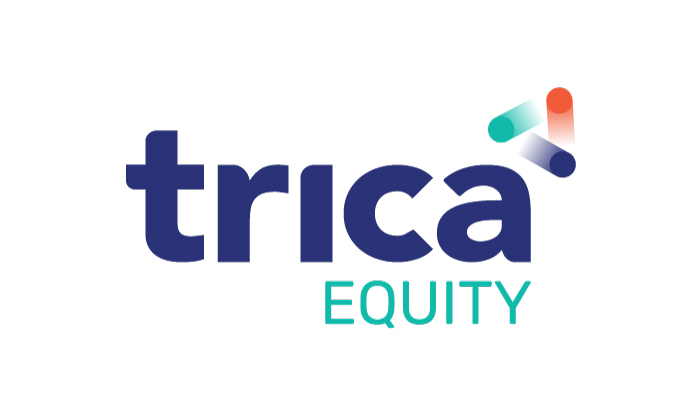
CFO Masterclass on Fundraising and Investor Relations
Raising venture financing for entrepreneurs and business executives can be exciting. However, for many businesses, fundraising can be tiresome and unpredictable.
Every company’s approach to raising financing is unique. It depends on the industry you’re in, your own business plan, and your market timing. Each round of fundraising carries a new set of organizational and data-gathering responsibilities.
As a part of trica’s masterclass webinar on fundraising and investors relations, we brought in Vikas Wadhawan, CFO at PropTiger, to talk about fundraising and managing investor relationships, and to take us through his experience of dealing with two of these very critical issues at a startup.
Vikas joined PropTiger as part of the founding team in 2011 as Chief Financial Officer, bringing with him over 17 years of financial management experience. Leading the finance and legal functions in PropTiger, he has been instrumental in the organic and inorganic growth of the PropTiger Group.
Vikas has a wealth of experience in fostering strong growth and transforming brands through strategic thinking and restructuring. He has been involved with tech start-ups for the past ten years and has helped them scale their businesses from the early stages.
Key Takeaways from the Masterclass Webinar – Fundraising
1. Timing your fundraise right
Vikas believes the timing of your fundraising is critical to its success.
While there is no one-size-fits-all mantra to it, certain factors are pertinent to your fundraise decision.
Here’s a good place to start:
- Consider your business plan and ask yourself: do you need additional capital infusion for your firm?
- Consider external factors like the state of the capital markets and the availability of liquidity. It’s not a good idea to hit the market when there is a dry patch.
Another factor to consider are the sectoral tailwinds. There are also industry tailwinds for particular types of enterprises from time to time. In finance, a tailwind is a situation or condition that can lead to increased earnings, revenue, or growth. Factors and events that improve growth or have a positive impact on profitability and sales are known as tailwinds.
“Make sure if you are in such businesses (with positive tailwinds), you should take advantage of it and hit the market for a fundraise instead of waiting for certain internal milestones to be covered.”
2. How much to raise and at what valuation
Valuation in the context of early-stage venture capital deals is the projected worth of a company based on its potential to grow in size, revenue, and influence. Founders seeking capital must determine the value of their firm based on how much money they need and how much of their company they are willing to sell to get it. When investors are considering making an investment in a company, they will conduct their own research to arrive at a valuation.
Valuation is a combination of multiple approaches.
- One method of valuation is the replacement value method. Replacement value method takes into account ‘the amount required to replace the existing company’ as the valuation of a company. That is, if one is to create a similar company in the same industry, all costs required to do so will form part of the value of the firm. This type of valuation is crucial since it also includes cost or the investment which goes into learning and unlearning and then building something.
- The second important factor that must be considered in the valuation of a company is the business potential which is reflected in the financial projections. Here, the Discounted Cash Flow (DCF) method is considered. DCF is a valuation method that uses predicted future cash flows to determine the value of an investment. DCF analysis aims to determine the current value of an investment based on future forecasts of how much money it will generate. However, this method is often not relevant for early-stage enterprises, especially when earnings and free cash flows are still a long way off.
- More often than not, what businesses use or investors use is market multiple from local as well as international markets. The process of identifying comparable assets (the peer group) and generating market values for these assets is known as valuation using multiples, or “relative valuation.” Because absolute prices cannot be compared, these market values are converted into standardized values relative to a key statistic. That statistic – whether earnings, cash flow, or some other metric – must have a logical link with the market value observed in order to be considered the driver of that market value.
Hence, a combination of the above three factors aids in determining the value of a firm or its valuation.
According to Vikas, “Valuation is both an art and a science. For any startup, it is more of an art than science especially since a startup is more involved in doing innovative and disruptive things. Hence, replacement cost or DCF methods are not really relevant for the stage at which a startup is or the type of business the startup is trying to establish.“
3. Raise capital as per your business need
If you obtain more capital than is required, sooner rather than later, you will dilute at a lower value. “ It’s important to raise whenever it is available, but don’t raise more capital than what you need”.
Therefore, before you go to the market describe your funding needs and how you plan to use the money raised. From the perspective of an investor, it is crucial to perfect your pitch.
4. Identify potential investors
Aside from raising funds, one of the most crucial things for a startup is identifying the right investors at the right time. Before applying to investors, it is essential – aside from having a compelling story – that you identify the investors who are potentially interested in your startup. It’s nothing personal, but certain investors specialize in certain industries, and without homework, you may find yourself presenting to an investor who isn’t interested in this particular industry.
Therefore, you should take your pitch to the next level by providing a lot of information about your industry first, then about your company. To get them on your cap table, you need to do some research on the investor you’re pitching and possibly build some kind of relationship with them.
5. Negotiating with investors
To ensure that all parties are on the same page after an investor meeting, summarize the main topics raised as well as the proposed or agreed term sheet. A Term Sheet is a non-binding document that outlines the offered terms and conditions under which an investment will be made by an investor.
Asking follow-up and clarifying questions will prevent misalignment and indicate your interest to the investor in question. With follow-up inquiries, you may avoid any confusion. Asking clarifying questions will not only demonstrate your interest, but will also help you and the investor create trust.
Vikas says, “You need to be clear about what some of your non-negotiables are so that you do not end up negotiating for things which are not very crucial and sacrifice some really critical or non-negotiable things.”
Key Takeaways from the Masterclass Webinar – Managing Investors Relations
1. Create Trust Between Investors
It costs money to develop a trustworthy relationship.
According to Vikas, “Investors and board members want to know where the company is headed and have confidence in you. Make sure you are aware of your key financial numbers and present what is required. These numbers are a good indicator of how your business is doing. Don’t go into too much detail because the objective is for them to gain confidence in you.”
Also, you should be able to tell a story behind those financial numbers so as to provide the context behind the numbers – merely presenting financial figures may not always be an accurate representation of a company.
2. Early Warnings
Another way to build a strong relationship with investors is to ensure that your investors are well-informed about things that are going fine within the company as well when things are amiss. Early warnings are always appreciated by investors, and hence this is very critical for your company and your relationship with investors.
Additionally, from the investor’s perspective, initially they like to get to know your management. For example, bring in different divisional heads, product heads, department heads, CTOs, and so on to interact with investors. The board of directors’ role is to oversee the activities of the business. This gives board members an invaluable perspective on the company’s overall strategic direction, what’s happening in the business, the challenges that the business is facing, among other things.
So, when board members get involved, your investors benefit from additional unique insights. This way you gain more investor confidence. Check out the full webinar for more such insights into fundraising and investor relations.
We hope you enjoyed this discussion by trica equity about fundraising and managing investor relations. Stay connected for more such discussions in the future
If you’re looking for ESOP and cap-table management assistance, book a demo to learn more about our offerings.
ESOP & CAP Table
Management simplified
Get started for free





